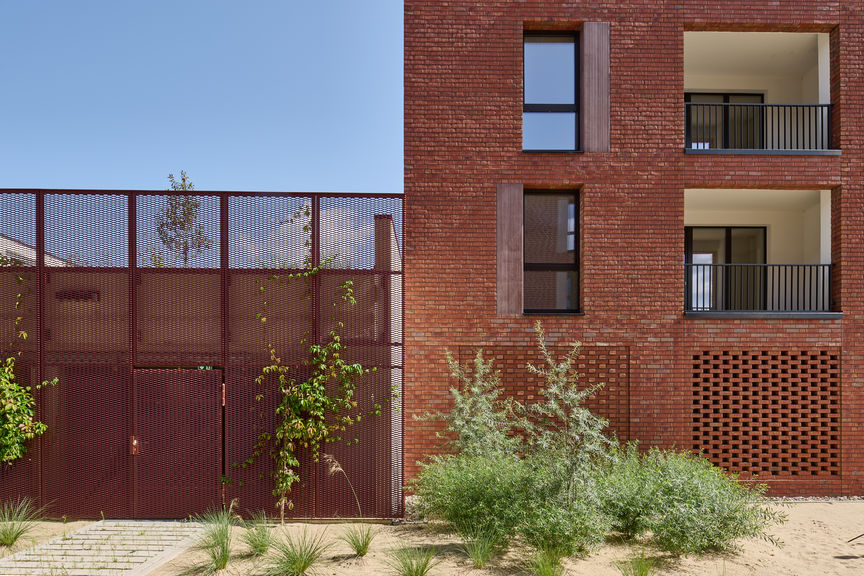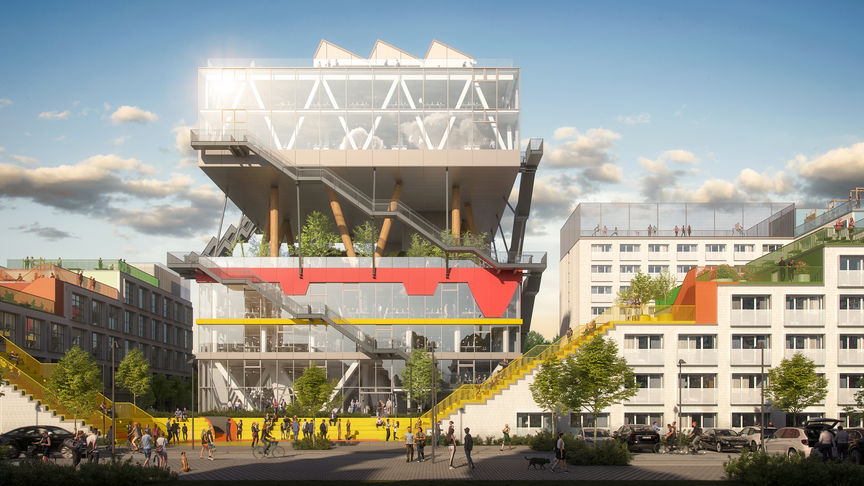Residential real estate market
Market sentiment and trends
Prices on the residential real estate market have recently come under pressure. The momentum of recent years, with purchase prices rising significantly in some cases and yields falling, has reversed. Purchase prices have fallen recently, but rents have continued to rise.
By mid-2024, however, the acute fall in residential property prices appears to be slowing down. Prices for detached and semi-detached houses and condominiums in particular are recovering, not least due to the stabilization of interest rates.
Under the current financing and construction conditions, however, the purchase budget of private households remains limited across the board and the risk for institutional investors, project developers, housing companies and cooperatives is increasing in terms of the expected or required return.
The high level of interest rates is increasingly restricting the financial scope of potential buyers. On the one hand, financing projects are being scrutinized more critically by banks and are resulting in lower budgets, especially for private households, who are having to spend a significantly higher proportion of their disposable income on housing and the associated (also increased) ancillary costs than in the last decade.
High debt ratios are also currently not economically viable for institutional investors. As a result, market participants' perception is that the transaction volume will have fallen more than significantly over the course of 2023.
Noticeable reluctance to buy
Increased environmental regulations, labor shortages, regulatory hurdles, further increases in construction and material costs as well as financing difficulties are hampering the upturn in new construction activity. Despite the first interest rate cut by the European Central Bank since 2016, the high level of interest rates continues to restrict the financial scope of both investors and potential buyers.
On the one hand, financing projects are being scrutinized more critically by banks and are resulting in lower budgets, especially for private households. They have to spend a significantly higher proportion of their disposable income than in the last decade on housing and ancillary housing costs, which have also risen. High debt ratios are also not economical for institutional investors at the moment.
Nevertheless, market players expect that the significantly lower interest rate level compared to 2023 will have a positive effect on the residential real estate market and that demand and supply could slowly recover in the future.
Completions at record level, but building permits down significantly
With a good 5,300 completed residential units in the city and surrounding area, Hannover recorded a peak in completions in 2023, while building permits fell sharply. While a long-term high was reached in 2021 with around 5,170 approvals, only around 3,140 dwellings were approved in 2023 as a whole, which corresponds to a decline of almost 2,000 cases and is therefore also around 26 % below the 5-year average (4,135 residential units).
This deficit will further widen the gap between supply and demand and increase the pressure on rental prices in particular in the future.
Multipliers continue to give way
The difficult to assess situation in the residential segment becomes particularly apparent when looking at the multiplier, which is used as an important indicator in the highly professionalized market for multi-family homes that is relevant for investors. After the sharp drop in multiples in new construction from 32.5 to 26.0 last year, this trend has only slowed down to a limited extent and is estimated at 22.5 times in new construction in 2024. The trend is similar for existing properties: here, the average multiplier has fallen by around 24% over the five-year average and is 19.1 this year.
One reason for this is the negotiating position of sellers, who are currently taking a wait-and-see approach. This is partly in anticipation of stricter energy efficiency requirements, particularly for existing properties following the amendment of the Building Energy Act and the EU taxonomy.
The pricing process, particularly in the area of new-build properties, is not yet complete. Therefore, the transaction activity and rental price development at mid-year compared to reference values can only be seen as an initial price estimate for 2024.
Rental market under pressure
The rental market is under increasing pressure, as potential buyers are waiting and remaining as tenants in the tight market in the current market phase and, as a result, rental demand is continuing to rise. In view of the rental price trend outlined in the real estate market report, market participants therefore expect rents to continue to rise for both new builds and existing properties. Rents increased again compared to 2023, reaching EUR 17.50/sqm for new builds this year and EUR 14.00/sqm for re-let properties in prime locations.
To classify the rents shown in the real estate market report for good residential locations: The current rent index of the city of Hanover shows a rent range of EUR 10.99 - 15.35/sqm cold rent for new apartments (built in 2010 or later) with more than 85 sqm of living space (further information and more differentiated evaluations for different construction age classes, sizes and locations for all 21 municipalities in the region can be found at www.hannover.de/mietspiegel).
Measures taken by the public sector
A reduction in bureaucracy, accelerated approval procedures and shorter deadlines are proposed in the amendment to the Building Code and are intended to give a new boost to residential construction. It remains to be seen whether and how quickly these changes will have an impact.
In addition to the extensive subsidy programs of the state of Lower Saxony, the state capital and the Hannover Region offer additional opportunities to promote the creation of social housing with their housing subsidy program - for both low- and middle-income households.
With the WohnBauInitiative (WoBI), the Hannover Region supports the towns and municipalities in the region in providing housing and promotes more and denser housing construction, particularly in the multi-family house construction market segment.
To this end, the initiative uses various instruments to support the municipalities in the region in the areas of inner development and the activation of existing buildings as well as land activation strategies.
Among other things, politicians and administrations in the municipalities are sensitized to the topics of multi-family housing construction, higher densities and sustainability (heat supply). Planning authorities and the local real estate industry are working together in networks to discuss the future of modern housing construction, which should be modern, affordable and sustainable. The state capital of Hanover is also aiming to extend and expand its successful housing initiative with the regional housing industry and to continue the housing concept until 2035.
Outlook: Where is the residential real estate market heading?
The trends and effects outlined above are not fully visible in current and long-planned projects, as these projects are already under construction and financing has often still been secured on the old terms.
However, the financing and demand situation, increased building material costs, unstable supply chains and a shortage of skilled workers mean that new projects and, in some cases, the development of further construction phases of already planned construction areas are being delayed. As a result, there is a lack of urgently needed apartments in the future, which further increases the pressure on the rental market.
There is great uncertainty on the supply and demand side due to the many effects, some of which are mutually reinforcing. The first completed construction phases of the major Kronsberg-Süd and Wasserstadt Limmer projects meant that around 5,300 completed apartments could be registered in the Hannover Region in 2023 as a whole.
This is the highest level since 1999, although the number of approvals has currently fallen significantly. In order to meet the unbroken demand for affordable or subsidized housing, even under the current conditions, the regional players see a clear need for action.
Interest rate trends, inflation, rising energy prices and the increasingly noticeable effects of climate change continue to unsettle many potential investors and project developers. They are increasingly withdrawing into market observation instead of launching new projects. The escalating crises and challenges currently appear too uncertain and unpredictable.
As soon as the trends in the developments outlined above become clearer and consolidate, it is to be expected that both investors and buyers on the regional market will become active again and price expectations on the supply and demand side will adjust accordingly. The reduction in interest rates in June 2024 has increased the affordability of real estate again.
Current forecasts show a slump in prices and purchase price expectations, both for existing and new construction. Distress sales of core projects are not necessarily to be expected. However, the crisis among project developers is not yet over. Both existing properties in need of refurbishment and new construction project developments may continue to see new valuations if the mix of rising construction costs, interest rates and tightening exit factors means that calculations based on previous assumptions no longer work out.


 © Hylive
© Hylive